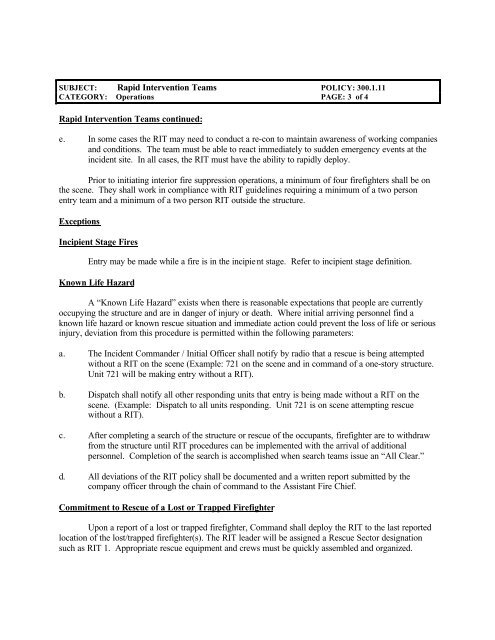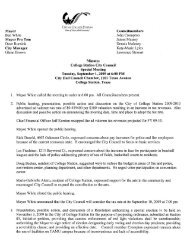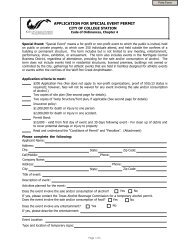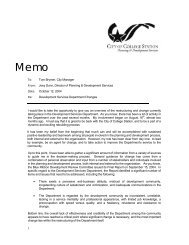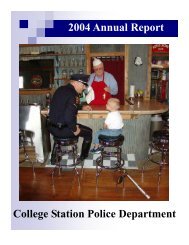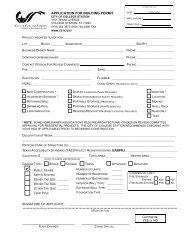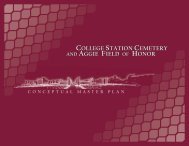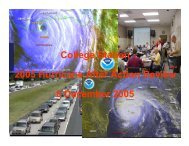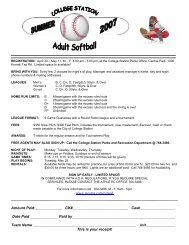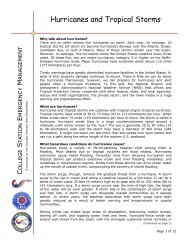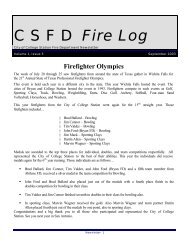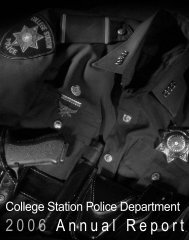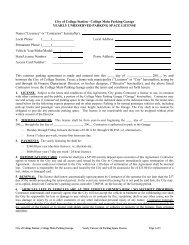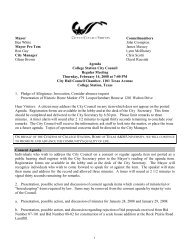standard operating procedure college station fire department
standard operating procedure college station fire department
standard operating procedure college station fire department
You also want an ePaper? Increase the reach of your titles
YUMPU automatically turns print PDFs into web optimized ePapers that Google loves.
SUBJECT: Rapid Intervention Teams POLICY: 300.1.11<br />
CATEGORY: Operations PAGE: 3 of 4<br />
Rapid Intervention Teams continued:<br />
e. In some cases the RIT may need to conduct a re-con to maintain awareness of working companies<br />
and conditions. The team must be able to react immediately to sudden emergency events at the<br />
incident site. In all cases, the RIT must have the ability to rapidly deploy.<br />
Prior to initiating interior <strong>fire</strong> suppression operations, a minimum of four <strong>fire</strong>fighters shall be on<br />
the scene. They shall work in compliance with RIT guidelines requiring a minimum of a two person<br />
entry team and a minimum of a two person RIT outside the structure.<br />
Exceptions<br />
Incipient Stage Fires<br />
Entry may be made while a <strong>fire</strong> is in the incipient stage. Refer to incipient stage definition.<br />
Known Life Hazard<br />
A “Known Life Hazard” exists when there is reasonable expectations that people are currently<br />
occupying the structure and are in danger of injury or death. Where initial arriving personnel find a<br />
known life hazard or known rescue situation and immediate action could prevent the loss of life or serious<br />
injury, deviation from this <strong>procedure</strong> is permitted within the following parameters:<br />
a. The Incident Commander / Initial Officer shall notify by radio that a rescue is being attempted<br />
without a RIT on the scene (Example: 721 on the scene and in command of a one-story structure.<br />
Unit 721 will be making entry without a RIT).<br />
b. Dispatch shall notify all other responding units that entry is being made without a RIT on the<br />
scene. (Example: Dispatch to all units responding. Unit 721 is on scene attempting rescue<br />
without a RIT).<br />
c. After completing a search of the structure or rescue of the occupants, <strong>fire</strong>fighter are to withdraw<br />
from the structure until RIT <strong>procedure</strong>s can be implemented with the arrival of additional<br />
personnel. Completion of the search is accomplished when search teams issue an “All Clear.”<br />
d. All deviations of the RIT policy shall be documented and a written report submitted by the<br />
company officer through the chain of command to the Assistant Fire Chief.<br />
Commitment to Rescue of a Lost or Trapped Firefighter<br />
Upon a report of a lost or trapped <strong>fire</strong>fighter, Command shall deploy the RIT to the last reported<br />
location of the lost/trapped <strong>fire</strong>fighter(s). The RIT leader will be assigned a Rescue Sector designation<br />
such as RIT 1. Appropriate rescue equipment and crews must be quickly assembled and organized.


